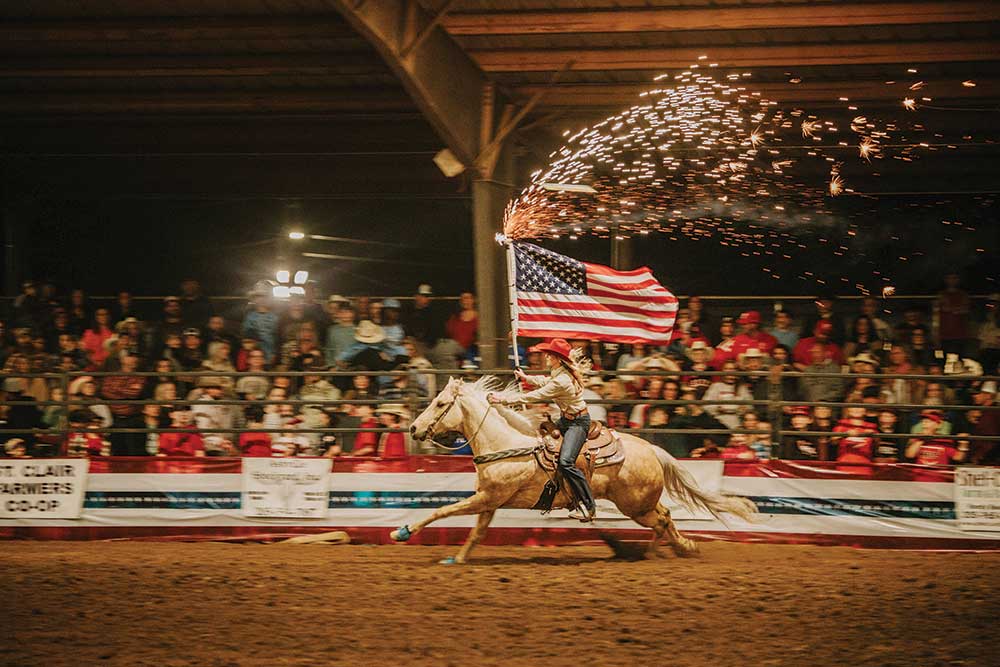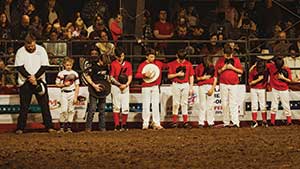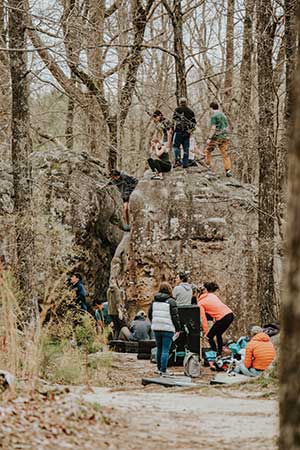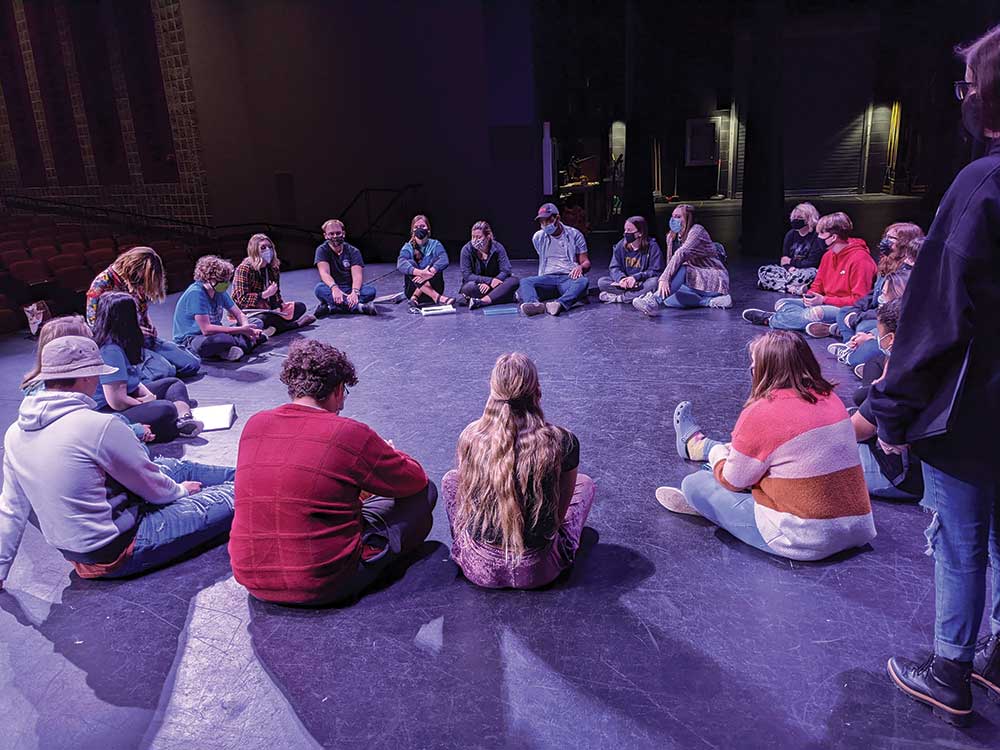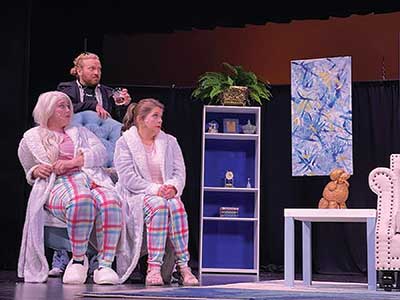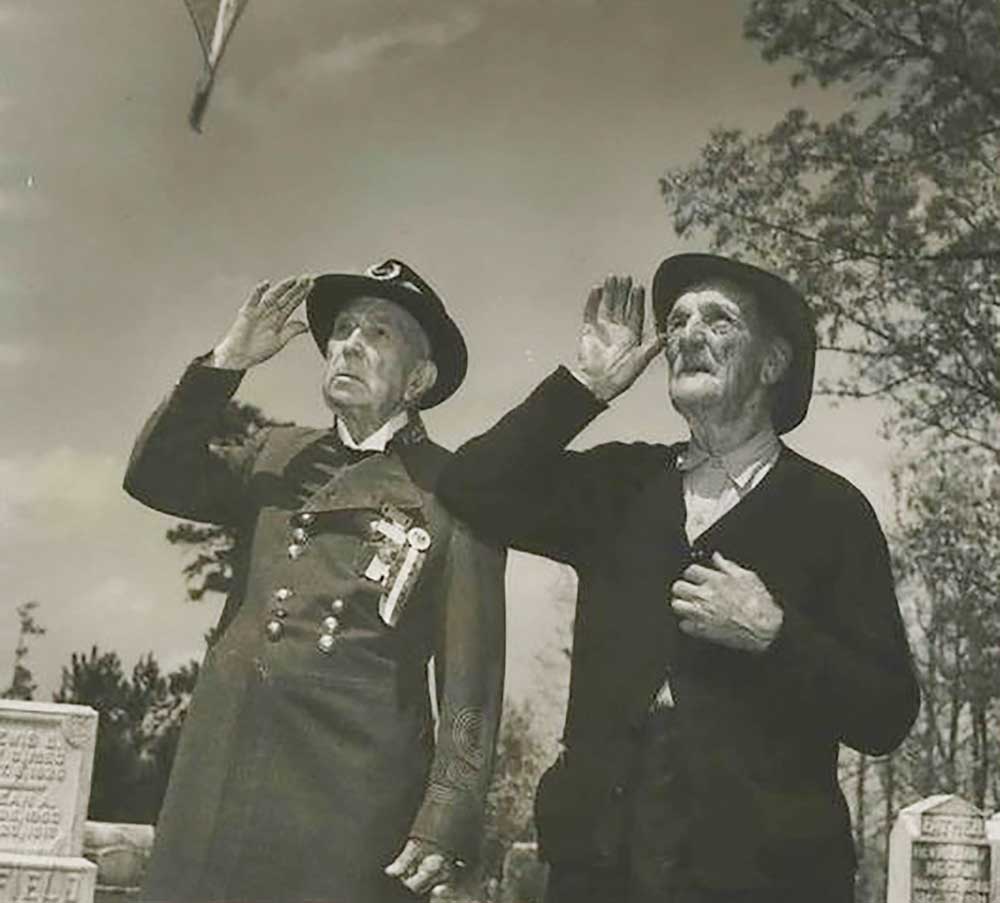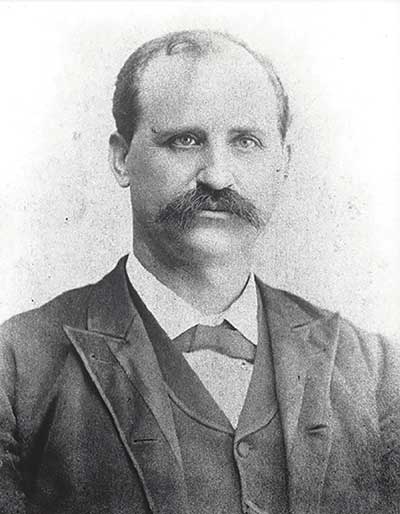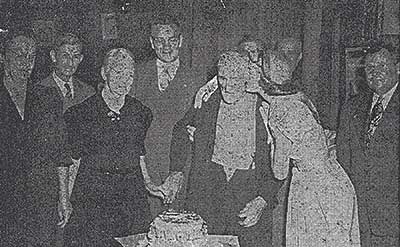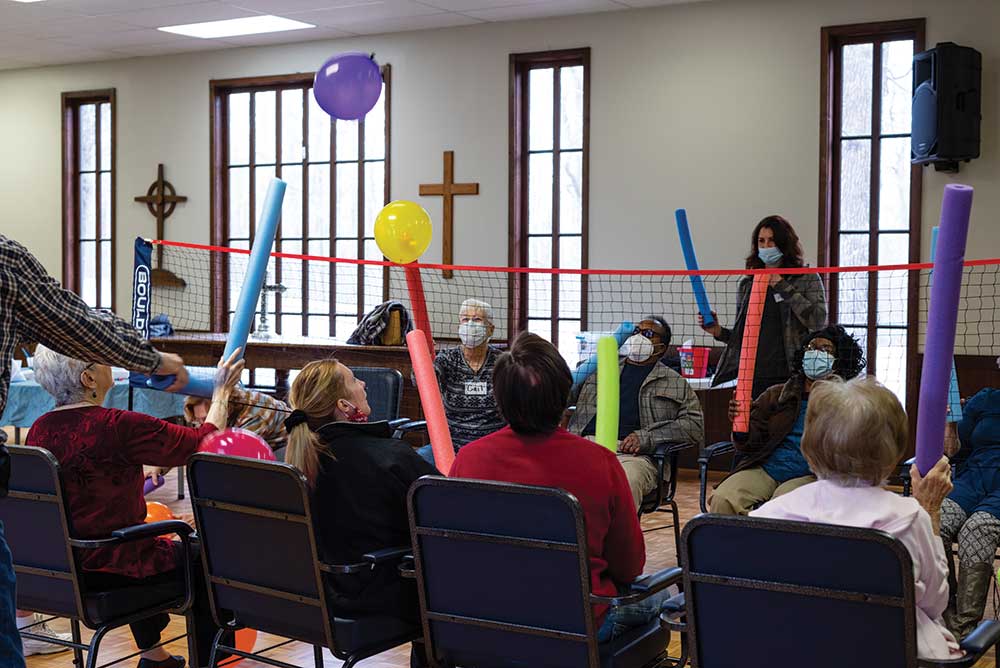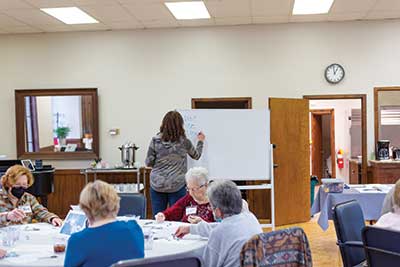Bringing good food
right to your door
Story by Roxann Edsall
Photos by Mackenzie Free
Submitted photos courtesy of DeLoach Farms
“Being married to a farmer is like being married to a professional gambler,” Kate DeLoach says. “There is so much investment to get a crop in the field.”
With variables like weather, labor shortages and the trade environment over which they have no control, keeping up their 840-acre farm is hard work. Kate and John DeLoach own and operate DeLoach Farms in Vincent, just across the St. Clair County line.
They have survived by taking lessons learned from the past and from the current pandemic and turning them into new opportunities.
The past two years have seen tremendous change in the farm, going from primarily producing soybean, cotton, wheat, hay and corn, to serving more of the needs of the local community.
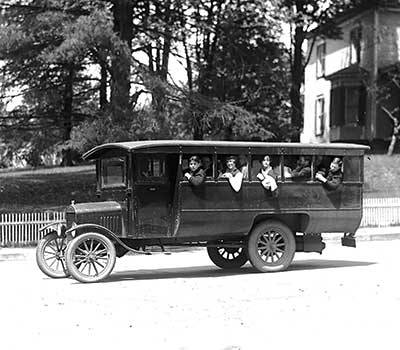
Their decision to offer farmer’s choice food boxes came out of a desire to meet the needs of the community at the beginning of the COVID-19 pandemic. They would put together a variety of fruits and vegetables in each box and meet customers for pickup. They now offer a full farm-to-table food box option with deliveries around St. Clair and Shelby counties.
Kate says their son, Jess, developed the farm-to-table food box program. He is an accounting major at Troy University. He came home just a few months into college when the pandemic shut things down. He dreamed it up and started selling the boxes while he was home.
It has been wildly popular, and Kate says they are hoping to include meat and eggs in addition to the fruits and vegetables this year. There are several options offered and include things grown on the DeLoach farm and by other nearby farms.
The U-Pick strawberry patch was also inspired by Jess. They have nine acres dedicated to strawberries and grow several different varieties. Unable to keep up with the demand last year, they have more than doubled their number of plants from 35,000 to 75,000 this year.
Dozens of people are scattered throughout the fields on a sunny Wednesday enjoying the strawberry picking experience. A grandma holds the hand of a giggly little girl with strawberry-stained fingers and mouth.
Another customer checks out with her five gallons of strawberries. She’s making strawberry jam today.
Still another is from Michigan, visiting her cousin, who brought her here to enrich her Southern experience. They’re planning to make strawberry shortcake later in the day.
These are the people John works so hard for. “People and strawberries are my favorite,” he says. “Getting to see the people enjoy the fruits (literally) of your labor is pretty great.”
“We so appreciate people who support the local farmer,” adds Kate. “The local buyers help to insulate us from the global supply chain issues. We kind of support each other.”
Serving his community is a labor of love for John, whose ancestors bought the land on the banks of Kelly Creek back in 1820. For him, it’s also about respecting the land and his heritage.
The land is traced back to John’s great-great-great-grandfather, John Martin, Sr., who moved from South Carolina to what was St. Clair County (before the county lines were redrawn) and bought the land to start his life with his new wife, Sarah. His son, John Martin, Jr., returned to the farm from the Civil War after having his arm amputated due to injuries sustained in the war.
Fast forward to 1915, and Frank Harrison Lowe, John DeLoach’s grandfather, was born in the two-room house on the farm. The farm thrived for more than a decade, then fell into decay and neglect during the Depression. Frank returned to the farm after World War II and began working to bring it back to its former glory.
Tremendous progress had been made by the time John was born. John remembers being a young boy and working alongside his grandfather on the farm. Watching his grandfather help a cow struggle to deliver her calf is one of his earliest memories. When his grandfather died in 1988, John promised his grandmother that if she kept the farm, he would take care of it. He worked the farm every day after school. When he graduated from high school at 16, he took over the daily operations.
Over 30 years later, running the farm keeps him very busy. He’s up each morning by 4:30 and falls back into bed exhausted by 7:30 most evenings. While he has a handful of people who work for him, he does a lion’s share of the work himself.
Beyond the planting and harvesting work, he even finds time to make furniture, like the picnic tables in the strawberry patch, with materials sourced on the farm. He runs fallen trees through the planer in his sawmill to be able to use what would be wasted.
He built a small fishing cabin with salvaged wood from former structures on the land and with cedar harvested there. The ceiling beams are from an old barn on the property that used to house a live nativity during Christmas.
Being a good steward of the land is one of the reasons he was honored as Alabama Farmer of the Year in 2018. That same year, DeLoach Farms was named the 2018 Alabama Farm of Distinction. For that award, farms are judged on sustainability, success as a business and conservation mindedness.
John credits his grandfather with instilling in him the need to responsibly care for the land and the creatures that use it. “We do a lot of conservation on the land,” he says. “We have beehives and plant things like clover and partridge peas for the wildlife. We have deer, fox, bobcats and lots of birds.”
Twenty acres of property is set aside as wetlands. The area is filled with stately tupelo trees, an important food source and shelter for migratory birds. It is also equipped with a special pump system that fills and empties the wetlands seasonally to support the health and sustainability of the habitat.
They live in the 10-room farmhouse built by John’s great-grandfather in 1918. “My granddad’s name in still written on a shelf in one of the bedrooms,” John says. It identified his grandfather’s personal storage space in a house full of children. The house was lovingly dubbed the “Halfway House,” because people said it was “halfway between where you were and where you needed to go.” And, according to family legend, it was a great place to stop for supper.
The house was also home to the first telephone line that connected local townspeople with doctors in nearby towns. It was installed in 1915 to give residents a way to connect people to the doctor in Vincent or the one in Easonville, the St. Clair County town now under water when Logan Martin Lake was created in 1965. They just had to make their way to the house and John’s great great-grandmother, Eva, would patch them through.
John’s great-grandfather, John Marion Lowe, also served the area by buying a school bus in 1925 to take rural children to school. After dropping them off at school, he’d come back to the farm, load up fresh produce and take it in to Pell City to sell.
The farm is one of eight in the state to be recognized as a Bicentennial Farm, a program that honors families who have owned and operated their farm for 200 years or more. “That’s quite a big deal,” explains Kate. “It gets harder and harder each year to stay open. There’s a lot of pressure to sell as the city creeps closer and closer.
“We’d love for someone to be here 200 years from now talking about the family farm.” But Kate adds, “It’s a hard way to make a living. We’ve never placed any expectations of farming on Jess.” His business and marketing sense in directing the food box deliveries and strawberry U-Pick operation seem to support that possibility.
DeLoach Farms seems to be playing the long game. When the chips were down, they adjusted to meet the changing needs in the community. And they are growing again.
They have purchased adjacent property with plans to add a blackberry U-Pick operation in a year or two. There are also tentative plans for an apple orchard. This summer they look forward to opening a new area for picking sunflowers.
They will also have vegetables for sale all summer. If you are interested in the farm-to-table food boxes, contact them via Facebook, on Instagram or at www.deloachfarms.com. l













